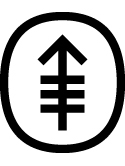Genetic susceptibility to head and neck squamous cell carcinoma Journal Article
| Authors: | Cloos, J.; Spitz, M. R.; Schantz, S. P.; Hsu, T. C.; Zhang, Z. F.; Tobi, H.; Braakhuis, B. J. M.; Snow, G. B. |
| Article Title: | Genetic susceptibility to head and neck squamous cell carcinoma |
| Abstract: | Background: In addition to influences of exposure to carcinogenic compounds, the development of cancer may depend on an individual intrinsic cancer susceptibility. Biomarkers for cancer susceptibility can be powerful additions to epidemiologic analyses. Purpose: This multicenter, case-control analysis combines previously published data and new data to substantiate the value of mutagen sensitivity as a biomarker of susceptibility to head and neck squamous cell carcinoma and, more importantly, to gain insight into the interaction between susceptibility and exposure to carcinogens. Methods: Mutagen sensitivity (mean number of chromatid breaks per cell of cultured lymphocytes treated with bleomycin in the late S-G 2 phase of the cell cycle) was determined in 313 patients with head and neck cancer and in 334 control subjects at two major U.S. medical institutions and one European institution, yielding a unique study population. The ages of the case and control subjects, as well as their history of use of tobacco and alcohol, were also recorded. The relationships between variables were analyzed by use of Student's t tests, Spearman's rank correlations, and multiple linear regression. For estimation of cancer risk, crude odds ratios (ORs) were measured and multiple logistic regression was performed. All P values were based on two-sided tests. Results: There were no differences across institutions in the distribution of mutagen sensitivity (Kruskal-Wallis test) for both case subjects and control subjects. Values for case subjects were consistently and significantly (P<.0001) higher than values for control subjects in the overall analyses. Age and tobacco or alcohol use did not influence the outcome in terms of mutagen-sensitivity values for either the case or the control subjects. A mean number of breaks per cell dichotomized at 1.0 was found to be the best predictor of a hypersensitive phenotype. For nonsensitive, heavy smokers, the OR was 11.5 (95% confidence interval [CI] = 5.0-26.6). This risk increased dramatically in mutagen-hypersensitive, heavy smokers to 44.6 (95% CI = 17.4-114.0). Multiple logistic regression analysis confirmed these results, and a significant trend was found (P<.01) for the dose-dependent increase in cancer risk by smoking. The consumption of alcohol potentiated the effects of smoking, resulting in an OR of 57.5 (95% CI = 17.5188.0) in hypersensitive persons. Conclusions: Mutagen sensitivity was found to be a biomarker of cancer susceptibility. This study underscores the importance of utilizing both susceptibility markers and exposure data for the identification of persons at high risk of developing cancer. Implications: More accurate risk estimation can define susceptible subgroups who might be targeted for intensive behavioral interventions, surveillance through screening, and enrollment in chemoprevention programs. |
| Keywords: | adult; controlled study; human tissue; aged; middle aged; major clinical study; case control study; case-control studies; clinical trial; cigarette smoking; squamous cell carcinoma; carcinoma, squamous cell; cancer risk; cancer susceptibility; controlled clinical trial; smoking; risk assessment; head and neck cancer; head and neck neoplasms; multicenter study; genetic susceptibility; double blind procedure; mutagenesis; ethanol; mutagens; disease susceptibility; mutagen testing; humans; human; male; female; article; mutagenic agent |
| Journal Title: | JNCI: Journal of the National Cancer Institute |
| Volume: | 88 |
| Issue: | 8 |
| ISSN: | 0027-8874 |
| Publisher: | Oxford University Press |
| Date Published: | 1996-04-17 |
| Start Page: | 530 |
| End Page: | 535 |
| Language: | English |
| DOI: | 10.1093/jnci/88.8.530 |
| PUBMED: | 8606381 |
| PROVIDER: | scopus |
| DOI/URL: | |
| Notes: | Source: Scopus |
Altmetric
Citation Impact
BMJ Impact Analytics
Related MSK Work




